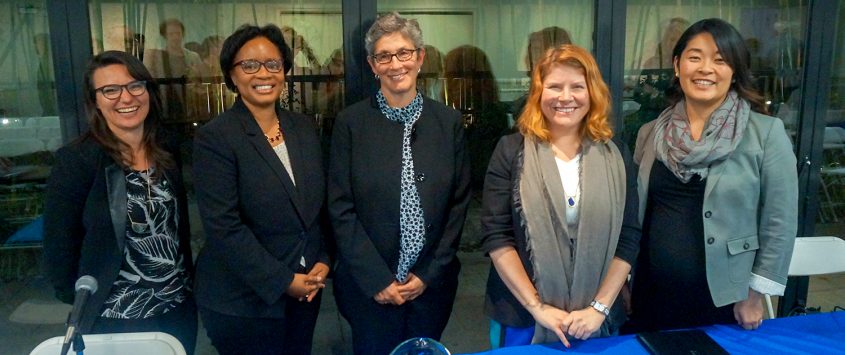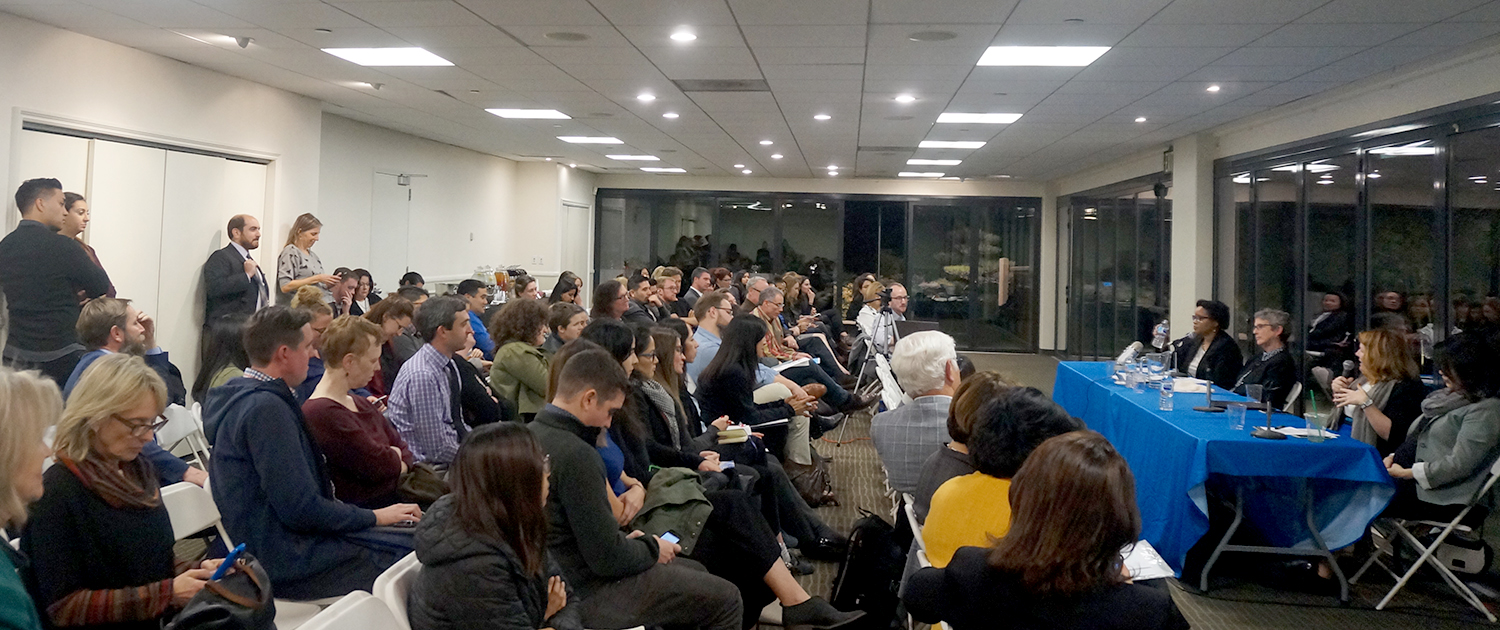
Who, Exactly, Is Our Transportation System Designed to Serve? Panelists decry transit shortcomings for women and families during second installment of an ongoing discussion series sponsored by the UCLA Institute of Transportation Studies
By Will Livesley-O’Neill, UCLA Institute of Transportation Studies
The gender imbalance of transportation planning — a field traditionally dominated by men who designed a system that too often falls short for women and families — was the subject of the second installment of the ongoing Institute of Transportation Studies (ITS) discussion series Transportation is a Women’s Issue on March 7, 2018.
Policymakers, practitioners, scholars and students gathered at the Japanese American Cultural and Community Center in downtown Los Angeles for a panel featuring Seleta Reynolds, Los Angeles Department of Transportation (LADOT) general manager and ITS advisory board member; LA Metro Deputy CEO Stephanie Wiggins; and UCLA Luskin Urban Planning Professor and ITS faculty fellow Evelyn Blumenberg. Moderating was Investing in Place Deputy Director Naomi Iwasaki.
The transportation system is fundamentally designed to accommodate a 9-to-5 work schedule traditionally associated with higher-income men, panelists said. Even as women’s participation in the labor market has surged, that system continues to ignore the needs of travelers at off-peak hours and those with complex trip-making patterns, who are much likelier to be women, especially lower-income women, they said.
Women and men travel similarly in terms of mode, but Blumenberg said that the purposes are often different: Women make more trips that serve their household — a “trip-chaining” form of travel that can include multiple stops on the same tour — in addition to commuting.
“In most households, women work and have a disproportionate responsibility for the unpaid labor in the home,” Blumenberg said. “It’s really hard to carry out those multiple tasks with public transit, or using a bike, or walking.”
Watch the full panel discussion:
In Los Angeles and beyond, work and household trips usually require access to a car. Transit agencies attempt to reduce congestion by focusing on service during traditional peak commute hours, Reynolds argued, ignoring off-peak travel that could benefit women.
“If what you are solving for is the peak, the peak, the peak, then you’re never going to have a system that has reliable, frequent, comfortable service at the times of day when women need it the most,” she said.
Wiggins said that, too often, transit agencies such as LA Metro have adopted supposedly gender-neutral plans that fail to account for the different travel patterns of women.
“They say that what gets measured gets done, and we haven’t been measuring it at all,” she said. “We have to make sure that we don’t use the planning tools of the past to inform planning for the future.”
To that end, LA Metro’s CEO has approved a recommendation from the agency’s women and girls council to gather data about female passengers and hire a consultant to help develop a gender action plan. As LA Metro embarks on a next-generation study to revisit its bus network amid dramatic ridership decline, Wiggins said that women must be at the table for all levels of decision-making — not just in leadership roles but also in conducting the studies or scheduling service changes. Further research into female travel patterns is required to understand what women and families need and to persuade the federal and state agencies that fund transportation projects to emphasize those needs.
Improving transportation safety is critical for women’s travel. A survey of former riders cited safety as their primary reason for leaving the system, and Wiggins said that LA Metro now examines safety concerns through the lenses of sexual harassment and design. New campaigns with Peace Over Violence and local law enforcement agencies aim to crack down on harassment while applying a gender lens to design. Results could include better lighting at bus stops and transit stations, creation of accommodations for strollers, and changes to where passengers sit on buses and trains to minimize unwanted contact.
Blumenberg noted that better off-peak service requires safer conditions getting to and waiting for transit — lower-income workers are more likely to need to travel at night but often feel unsafe using the bus or train at those times.
Reynolds pointed out that too many futurist conversations about the potential benefits of automated buses and rideshare vehicles fail to recognize that many women will not feel comfortable without a driver, who acts as a chaperone.
“That is a really overlooked value and quality that a transit operator brings,” she said, adding that such discussions perpetuate a male way of thinking about mobility. “Most women, we feel like we move through the world always on guard about sexual harassment or assault.”
Reynolds said that her department’s new strategic plan includes a concerted effort to understand what women are looking for from their transportation system. Then, implementation of pilot programs could lead to larger changes.
LADOT plans to start with after-school transportation, a burden that now largely falls on women to arrange as a result of long-term school budget cuts. A pilot electric car-sharing program in the MacArthur Park neighborhood incorporated local women’s requests for features such as carseats and the ability to add elderly caregivers to family service accounts.
Moving forward, a more comprehensive and inclusive approach to transportation planning is needed, panelists said. That approach should factor in the economic benefits of car access, better off-peak transit service and bike infrastructure catered not just to male preferences, and much more.
Right now, Reynolds said, “we’ve trapped women into finding the one choice that feels safe and comfortable and works for them, because of the design of the system.”

Policymakers, practitioners, scholars and students gathered at the Japanese American Cultural and Community Center in downtown Los Angeles for the panel discussion.







Leave a Reply
Want to join the discussion?Feel free to contribute!